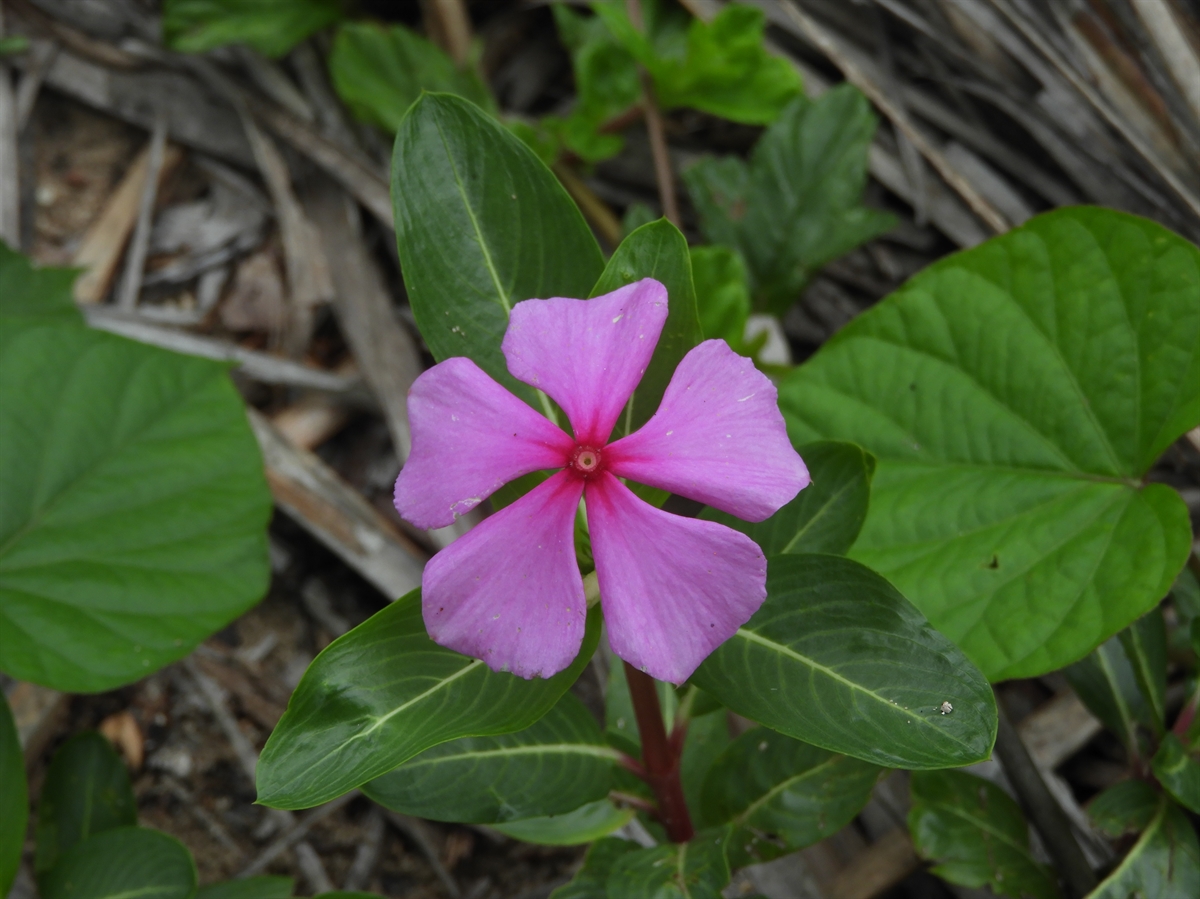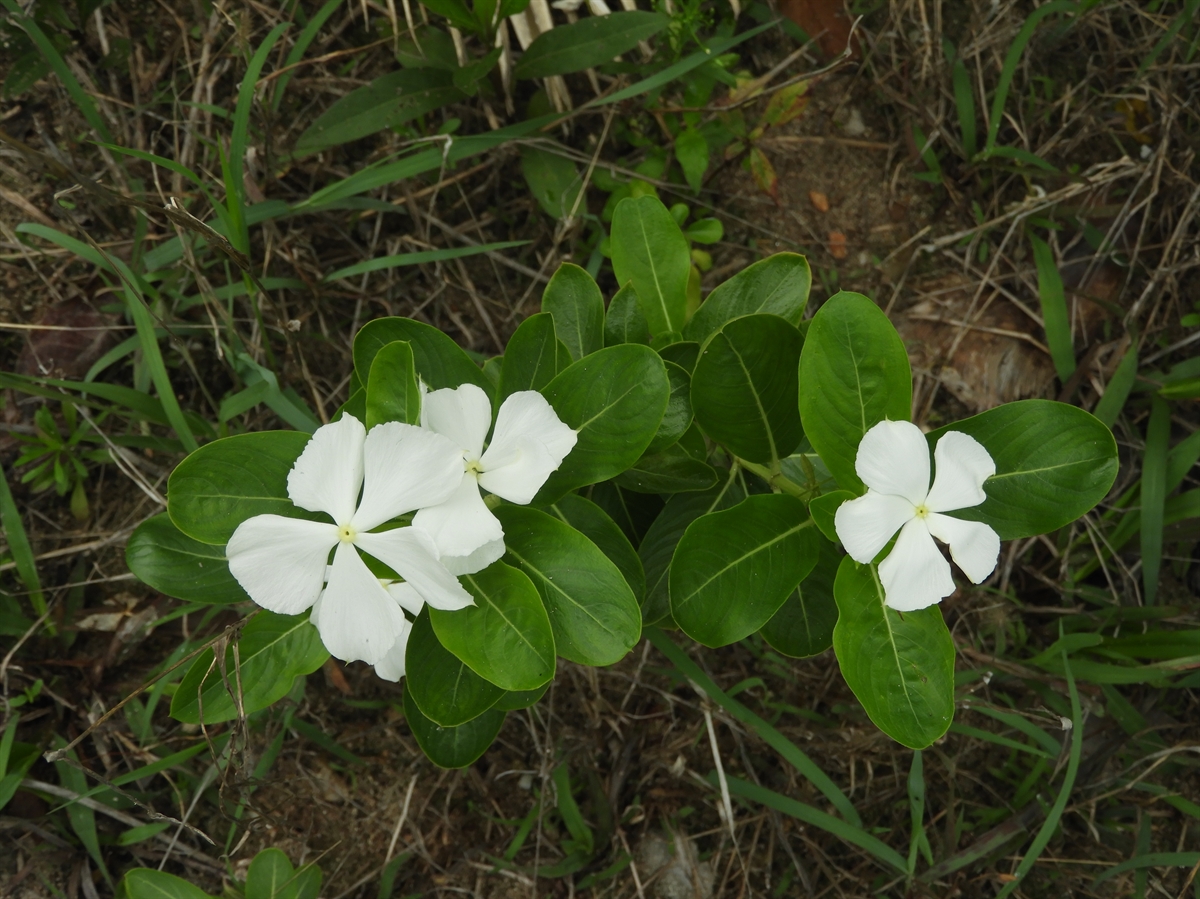Habit: Catharanthus roseus grows as glabrous, perennial herb up to 80 cm in height. The leaves are arranged oppositely, to 8 cm long, 3 cm wide, oblong to elliptic to oblanceolate, with an entire leaf margin, and a round to mucronate apex.
The complete, perfect, actinomorphic flowers are arranged terminally and in leaf axils in cymes or solitary. The calyx has 5 unfused, green, pubescent sepals. The corolla has 5 white or pink petals that are fused forming a pubescent tube with the lobes slightly overlapping to one side forming a pinwheel shape. There are 5 stamens fused to the corolla tube. The ovary is superior and has 2 locules and many ovules. There are 2 glands with the stamens. The fruit is a follicle (in pairs) that turns brown at maturity.
Habitat: Catharanthus roseus grows in Human Altered environments (yards and roadsides).
Distribution: Catharanthus roseus is NOT native to the Lucayan Archipelago. It is native to Madagascar. It is grown throughout tropical and subtropical regions of the world.
Medicinal/Cultural/Economic usage: Catharanthus roseus has been used medicinally in the Lucayan Archipelago to treat circulatory issues.
Extracts of Catharanthus roseus have been used to effectively treat cancers.
It is used as an ornamental.
Catharanthus roseus is EXTREMELY toxic in all parts. Eating any part of the plant can cause death.

